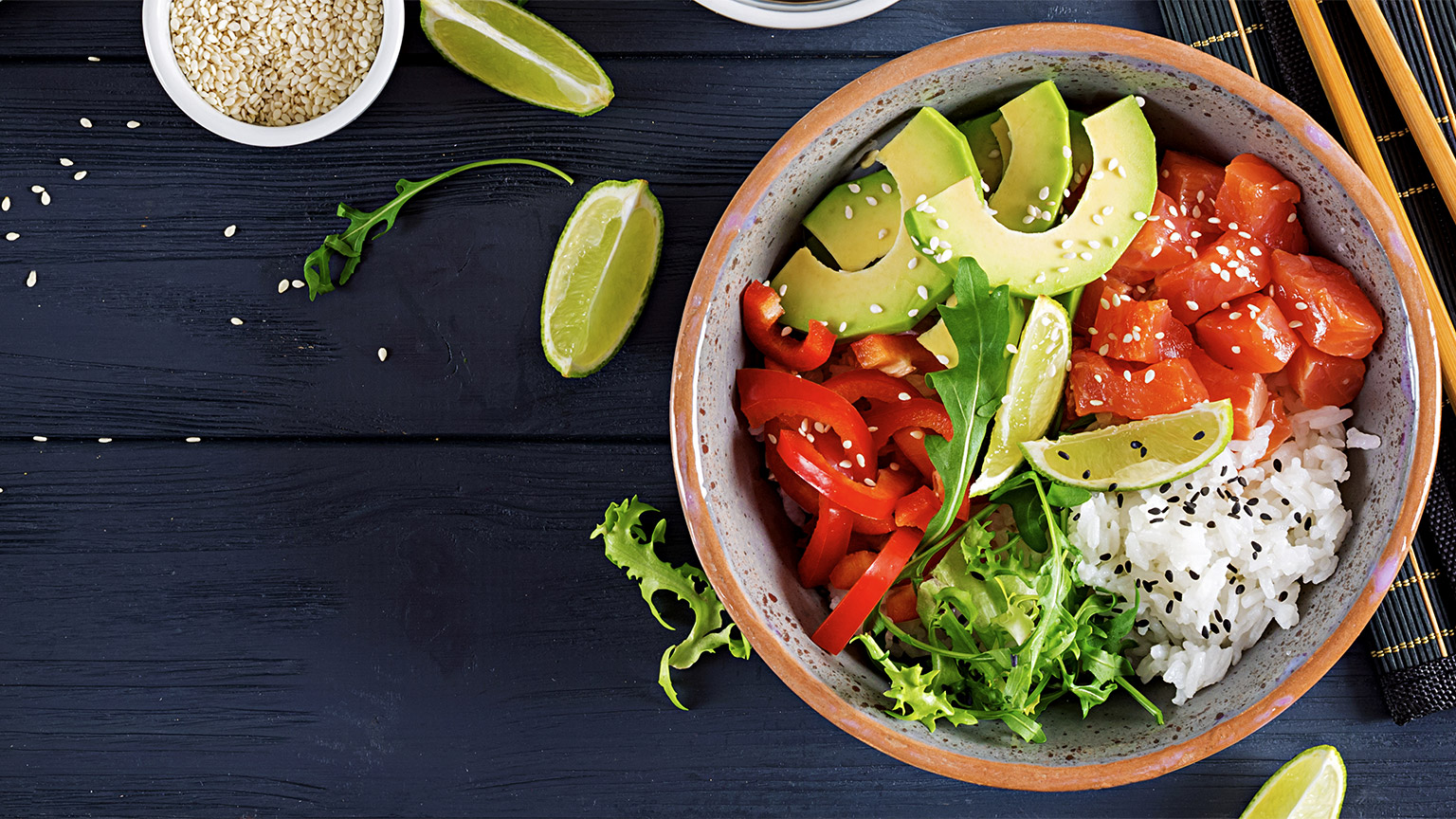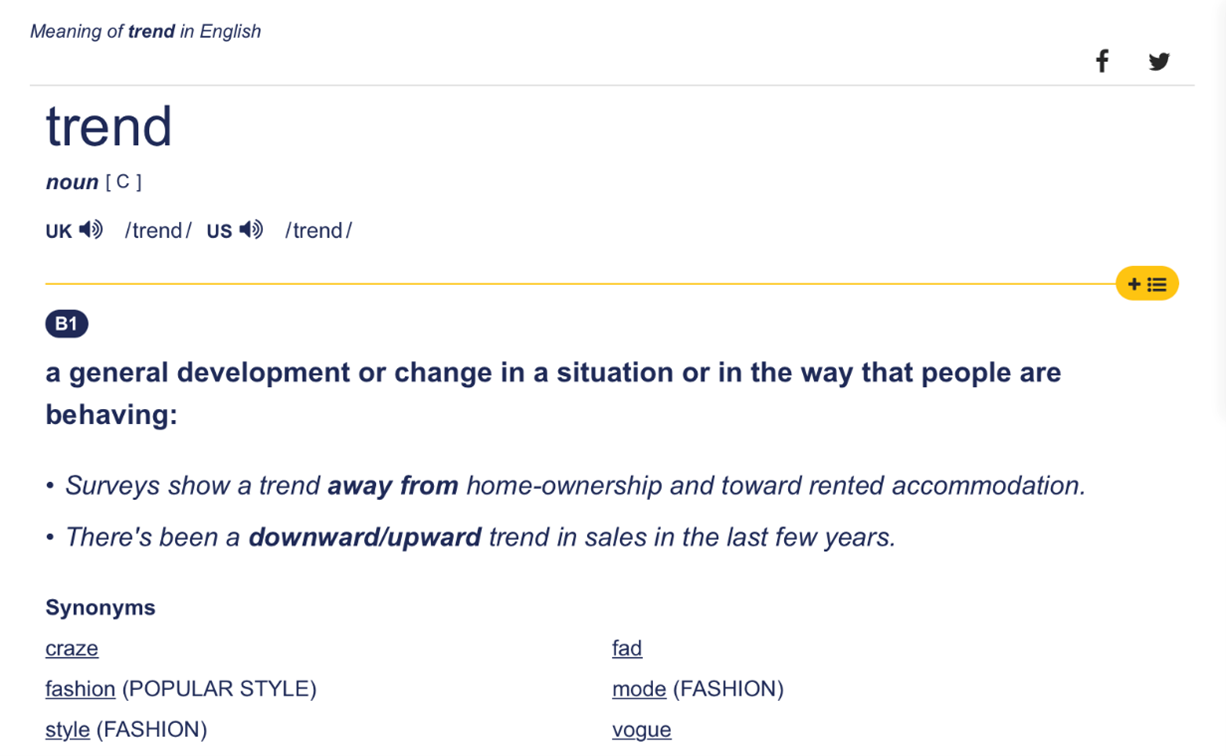
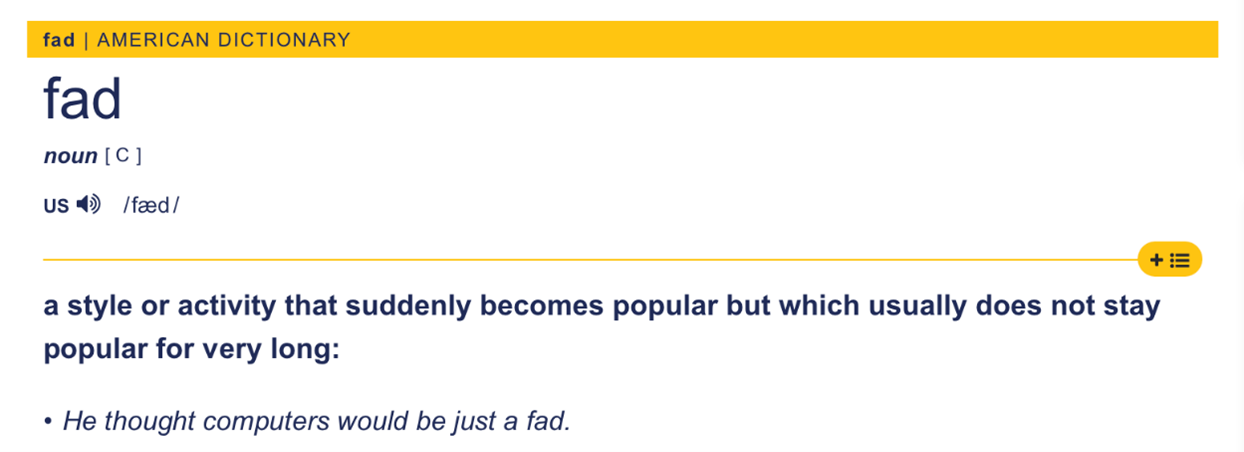
(Cambridge Dictionary, 2021)
Self-Directed Learning
Identify at least 5 current or recent food trends and 5 current or recent fads (they may still be around, but do you think they are here to stay?). Think about why each one in your list is either here for a long stay, or here today, gone tomorrow. Makes notes in your journal.
| Trends | Is it here to stay? Why / why not? |
|---|---|
| 1. | |
| 2. | |
| 3. | |
| 4 | |
| 5. |
| Fads | Is it here to stay? Why / why not? |
|---|---|
| 1. | |
| 2. | |
| 3. | |
| 4 | |
| 5. |

Identify at least 5 current or recent food trends and 5 current or recent fads (they may still be around, but do you think they are here to stay?). Think about why each one in your list is either here for a long stay, or here today, gone tomorrow. Makes notes in your journal.
Read the full report here.

Using this dictionary definition of “development” to think about how the term applies to the hospitality industry; we can look at ways in which the industry is able to grow, change and become more advanced.
It is an important part of any business and industry to continue to grow and develop, and this is often done as a response to customer demand and feedback. In other words, we could say that a business can grow and advance (i.e. develop) in response to customer demand (i.e. trends).
So when we think about developments in the hospitality industry, these are likely to be improvements behind the scenes in how the business operates to meet customer demand. It could mean improvements in the technology used to produce the food, ways to improve food safety, in improved staff working conditions, ways to communicate with customers using social media etc.
In general terms, you could think of food trends as “what do customers want that is new or different?” and developments as “how can my business improve the efficiency of what it does?”
Self-Directed Learning
What developments have there been in the past 20 years or so to help food businesses improve on what they do?
Find some examples to include in Task 1 of assessment that explain the meaning/importance. Remember, developments could be in new technology, methods and techniques of cooking food, communication with customers or suppliers, front of house management etc.
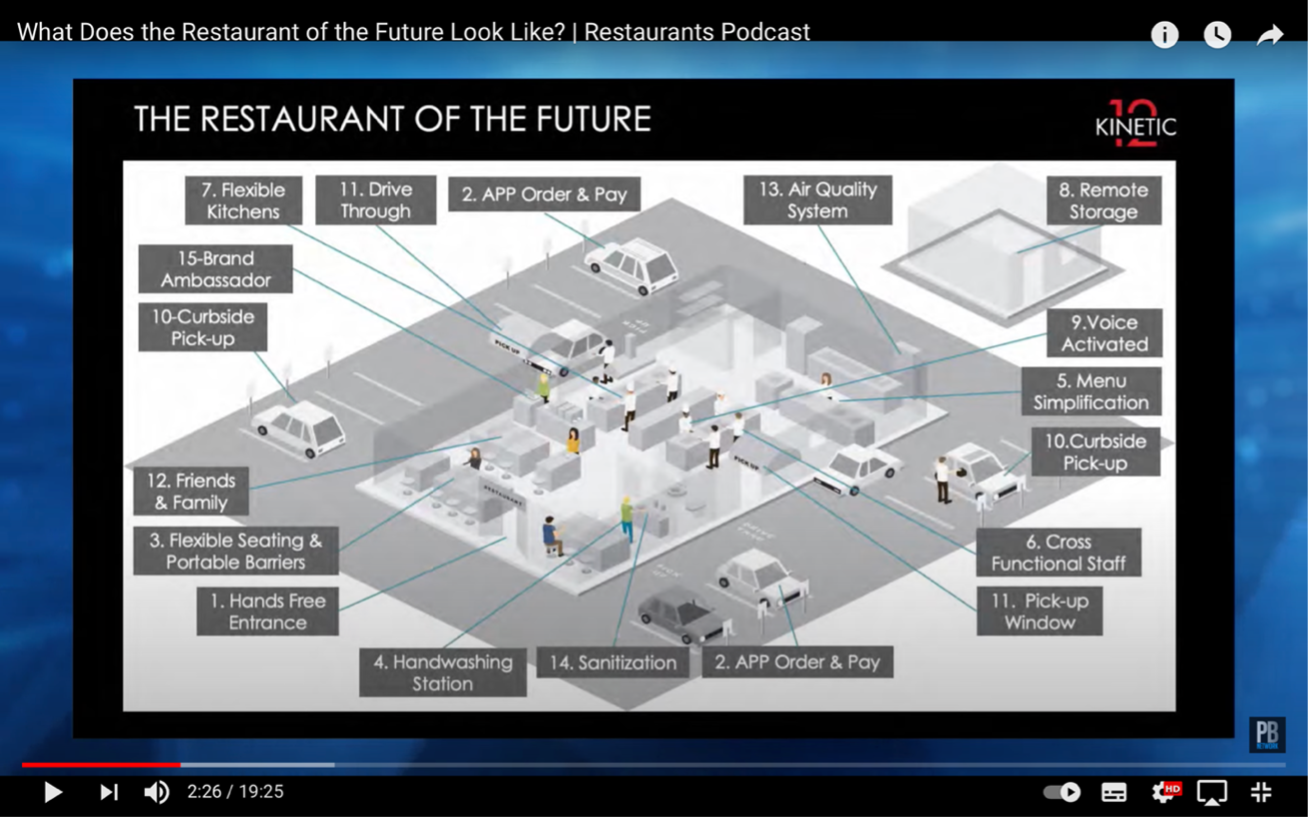
Exercise 2
Watch the video and make notes in your journal on the predictions for developments of the restaurants of the future. Which ones do you think are relevant to New Zealand’s hospitality industry? Why?
Why do you think others are less relevant or not relevant to NZ?
Self-Directed Learning
Draft your Task 1 definitions and explanations of trends and developments – remember to include examples. Word count to be approx. 200 words. Submit to Checkpoint 1 by the end of this week.
Task 2 Requirements
You need to be writing approximately 1000-1200 words for Task 2. You must write about each of the four topic headings (Internet/Social Media, Food Production, Restaurant Trends and Eating Habits), so should be aiming to write around 300 words on each topic.
Task 2 is general research about trends and developments overseas. Do not write about New Zealand, or use examples from New Zealand in this section – you will be doing that in Task 3.
The sub-topics listed in the Assessment Schedule and in this Resource and the examples and case studies shown are a guide to the kind of information you should be researching – do not try to write about all of them as it would require far too many pages. Instead, choose one or two key sub-topics (which should be relevant to each other) and use examples to help explain your points and your research. The examples and case studies provided here should give you an idea of the information you need to find, but you must provide different examples from your own research. It is very important to stick to the question being asked in the assessment – do not get side-tracked with interesting, but unrelated, information!
“Explain how the four trends and developments have influenced commercial hospitality establishments”. Avoid writing about domestic or household factors, unless they are relevant to commercial hospitality operations.”
Don’t forget to use plenty of images or graphics to help you explain your point, and remember to save the links to your information for referencing.

Social media has become one of the most important forms of media and communication over the past 10-15 years. It has developed into a multitude of sophisticated platforms, where individuals and businesses can upload content immediately, and it would be difficult to think of any business now which can afford to ignore the marketing power of social media.
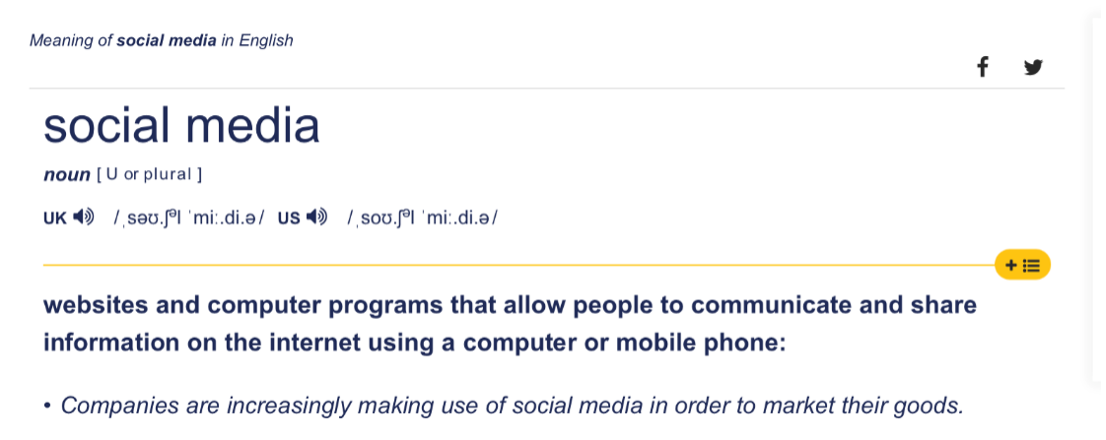
(Cambridge Dictionary, 2021d)
Exercise 3
How many different social media platforms are you aware of? List them in your journal and briefly explain their purpose and how they work. How could they be used within a hospitality operation?
Self-Directed Learning
Pick two social media platforms you think would be useful for a food business to engage with. Find at least one example of each being used by a real food business and note what type of content is being produced and uploaded. Post the best links you find to the class Teams space for a discussion.
Complete Task 1 definitions and explanations of trends and developments and submit to Checkpoint 1.

The internet has been around far longer than social media platforms and has been an established means of communication for nearly 30 years. The internet (aside from social media) is an essential part of doing business.
From restaurant websites containing images, videos, menus and other important information about the business; to online ordering systems for purchasing supplies; to the huge surge in mobile technology allowing customers to order food online and have it delivered; the internet is a vital part of doing business in the 2020s. With the Covid-19 pandemic the internet has only become more important.
There are many ways a food business can utilise the power of the internet. Customers too will use different features online to inform their choices about what, and where, they want to eat. Here are a few examples:
|
Websites |
View the Mr Morris website, an Auckland restaurant which opened recently in the CBD. |
|
Online Review Sites |
e.g. TripAdvisor, Yelp, Zomato, OpenTable, Google etc. Watch the video as a fake restaurant is created and is hyped up to become the #1 rated restaurant in London on TripAdvisor! Watch restaurant owners react to Yelp business practices |
|
Food Blogs |
Food blogs have been very popular since the mid-2000s and there are hundreds and hundreds online. They serve many purposes but many are specialised in one type of food or diet. Food blogs have helped to introduce new food concepts to the public. Blogs are often story-based and tell a personal story, and this helps them to attract a loyal following. Blogs can be very influential in showcasing ingredients and how to use them. As such, blogs can be at the forefront of setting food trends, or help to promote them and expand knowledge about them. Often they will contain recipes, and when viewed on a mobile device they can even replace a traditional cook book. |
| Smartphones |
As internet-capable devices, smartphones are incredibly important for food businesses to consider. Since we usually have our phone with us at all times, smartphones have become the vehicle to deliver not only the social media content, but also online ordering and tailored apps, which can track customer order history, locations, preferences etc.
The portability and ever-presence of the smartphone in our pocket also feeds into the craze of customers photographing their food and uploading to social media sites like Instagram and online review sites. For a food business, customers sharing images of their food is a useful marketing tool and helps spread their name, but increases the pressure to make their food look “Insta-worthy”. |
Self-Directed Learning
No SDL Fridays (4 hours per week only)
Ensure Task 1 has been submitted to Checkpoint 1 this week and that you are up to date.
